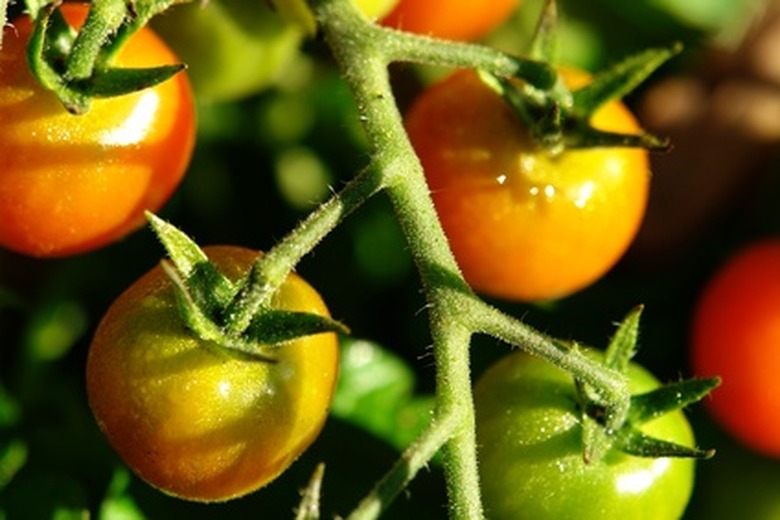Tomato Plant Pests In Florida
Florida's subtropical climate is wonderful for the home garden. Unfortunately, Florida's climate is also inviting to many insects and diseases. The harshest heat and humidity of the summer can make growing tomatoes a challenge, but taking proper precautions, such as solarizing soil and being proactive (looking for insects before they destroy a crop) go a long way in ensuring a success. Grown staked in beds, in baskets and other containers, tomatoes are among the most anticipated first fruits of many gardens.
Insects
Insect pests of tomato are plentiful and include aphids, whiteflies, cutworms, hornworms, fruitworms, pinworms, stinkbugs, leafminers, mole crickets and loopers. Aphids transmit disease by sucking plant juices from the leaves. Plant yellowing and poor color development of fruit is caused by whiteflies. Tiny whiteflies are often seen swarming around infected plants. Insecticidal soap is sometimes used with success to control insect damage, and other commercial insecticides are available but should be used with careful attention paid to proper usage.
- Florida's subtropical climate is wonderful for the home garden.
- Plant yellowing and poor color development of fruit is caused by whiteflies.
Disease
Leaf spot disease, early and late blights, viruses and wilts are common and serious diseases of tomatoes in a Florida garden. Sprays and dusts are used to control leaf spots, but viruses and wilts can only be controlled by choosing tomato plants resistant to the particular disease. A "V" or an "F" designation on a tomato plant's variety will indicate its resistance to verticillium wilt or fusarium wilt. Double letters, such as "FF" indicate resistance to two different strains of a disease. Reading the variety information and knowing its disease resistance is very important when choosing tomatoes for growing in Florida.
Nematodes
Nematodes are microscopic, worm-like, parasitic creatures that cause severe damage. Nematodes are prevalent in most soils and cause stunted growth, wilting and death of tomato plant. Soil solarization is a method of sterilizing the soil with the heat of the sun and is a non-chemical way to kill or reduce many nematodes, fungi, weeds, bacteria and insects that are in the soil. Several weeks before planting, the area being prepared is moistened and covered with a clear plastic tarp.
- Leaf spot disease, early and late blights, viruses and wilts are common and serious diseases of tomatoes in a Florida garden.
- Sprays and dusts are used to control leaf spots, but viruses and wilts can only be controlled by choosing tomato plants resistant to the particular disease.
References
- "Vegetable Gardening in Florida"; James M. Stephens; 1998
